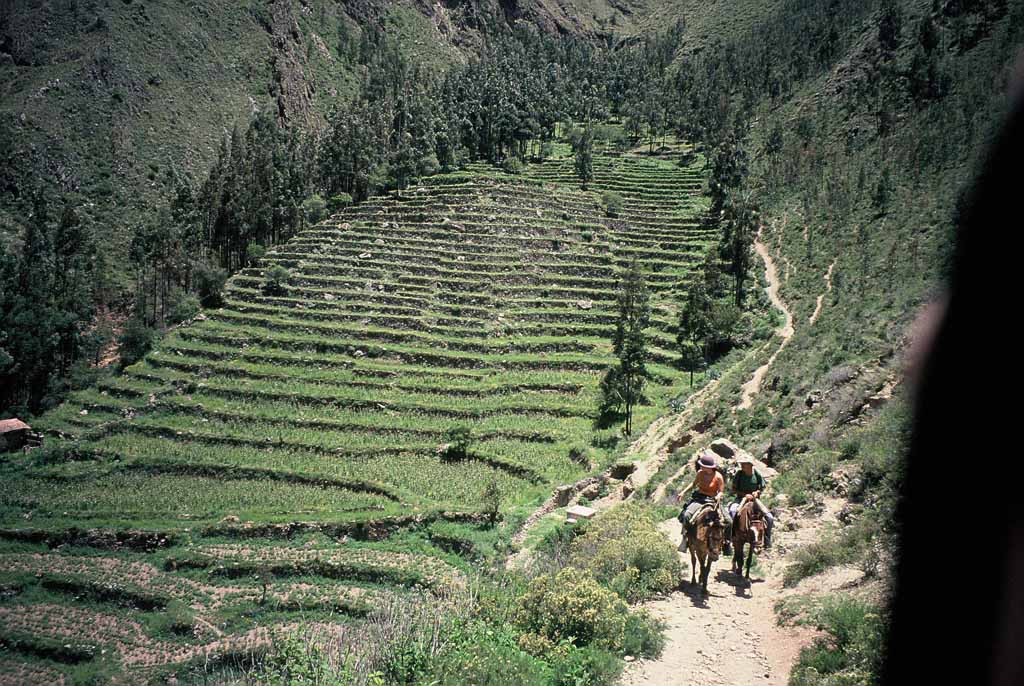Travelogue Peru 2006
Valle Sagrado – The Sacred Valley of the Incas
10.03.2006
Dear Friends,
My last reported ended in Cusco, the former capital of the Inca Empire. The next morning we took our day packs again, left the big backpacks in the hotel and went off to explore the sacred valley of the Incas.
First stop was Lake Piuray, next to the village Chinchero. We walked its shore for an hour and enjoyed the beautiful landscape which actually resembles the Allgaeu a lot, a region at the feet of the Alps I am very familiar with: fields, pastures, cattle and mountains on the horizon.
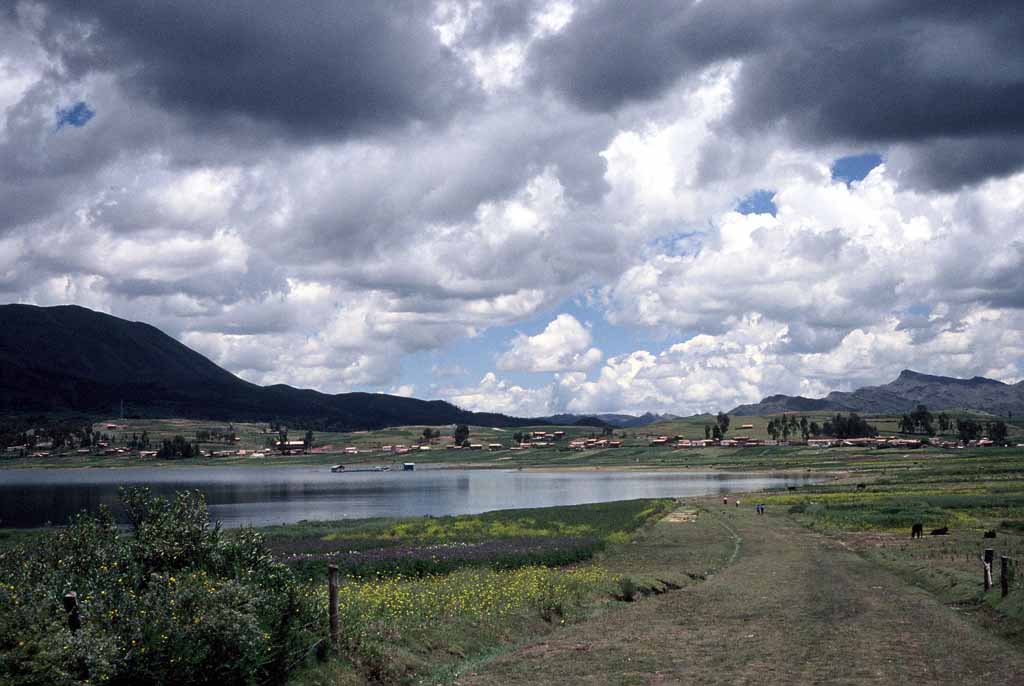
We then returned to the street and continued on the bus for a couple of kilometers. To reach the village Maras, we had to take a colectivo. A colectivo is normally a station wagon, a taxi, which takes several passengers on a more or less fixed route. In this case we were nine passengers plus luggage. In Maras we rented the same taxi for a tour to Moray, close to the village. Moray is known as the “laboratory of the Incas”.
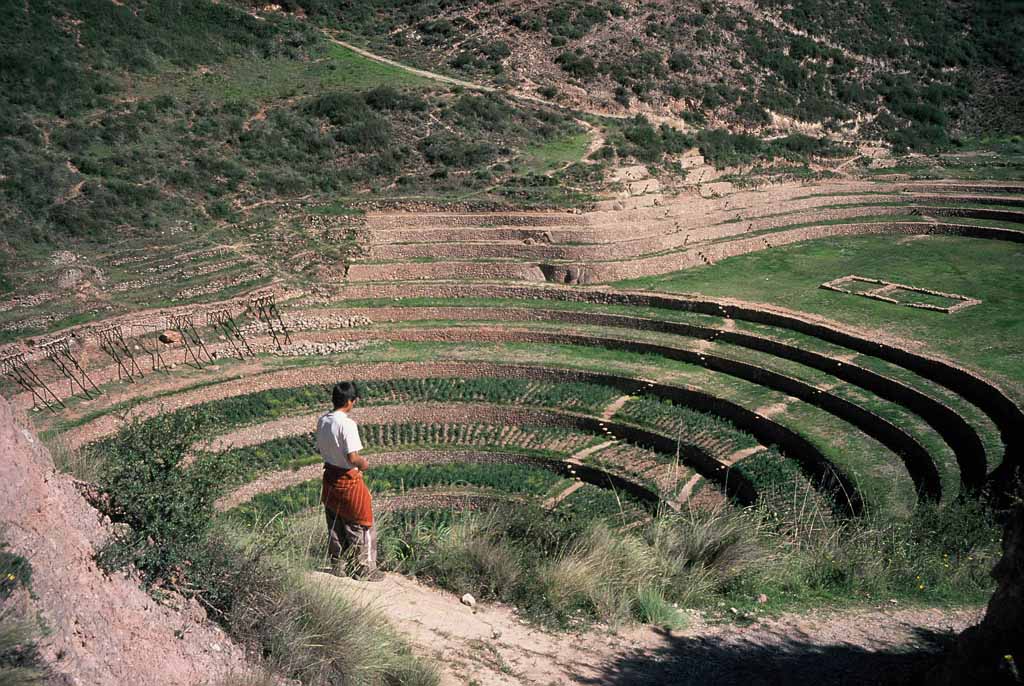
In Moray the Incas used some funnel like craters where specific geographical conditions result in enormous temperature differences from the bottom to the top of the crater, up to 12 degrees Celsius. They built terraces in the slopes and it is believed that the Incas used these terraces to breed new kinds of crop, most important acclimatizing corn to high altitudes. Maybe they even covered the walls in silver and gold to create even higher temperatures in the craters. Hence Moray is also called the „Inca Laboratory”. Corn did not grow in the mountains in ancient times and it might have been impossible to create an empire as large as the Inca’s (15 million inhabitants?) without cultivating corn. Our taxi driver led us through the ruins, waited a little more till we saw everything and took our pictures. Then he drove us to the Salineras, another attraction close to Maras.
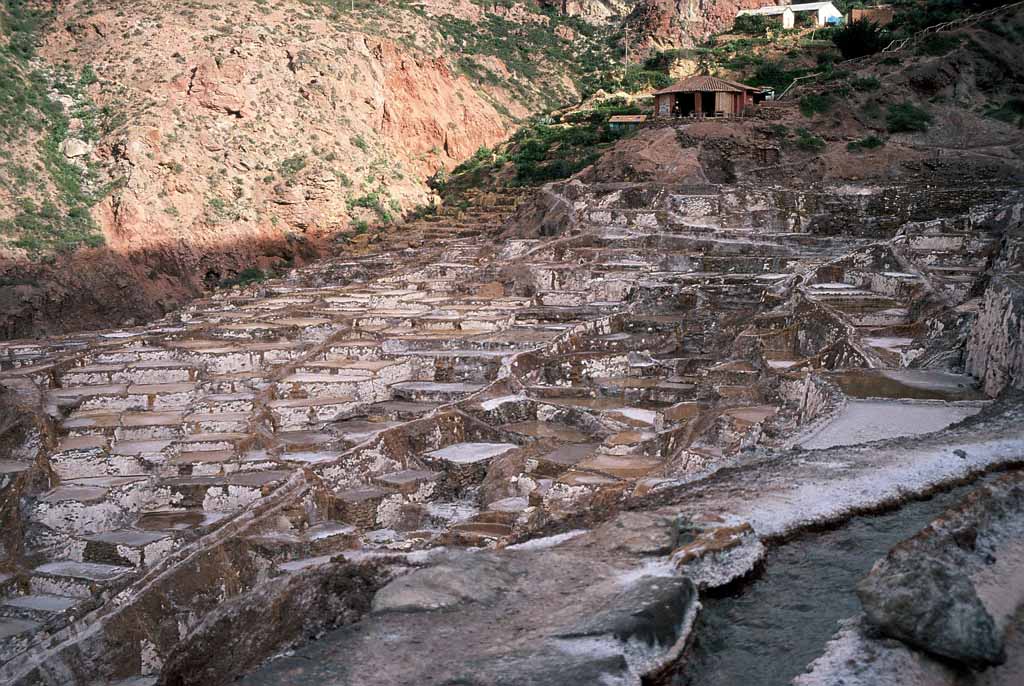
At the Salineras there are natural volcanic springs which seem to pass through salt depots before coming to the surface and therefore the waters are saturated with salt. Maybe since thousands of years the inhabitants of the area have collected those waters in several thousand basins where the water evaporates leaving the salt. Till today it is collected without machines and carried away on donkeys. Nowadays those sites have lost there importance due to cheaper industrial salt production from sea water but the Salineras are still in use. Nevertheless a beautiful and impressive sight. Our driver left us here. We walked down through the salt terraces and a valley till we reached the main street between Urubama and Ollantaytambo.
Travelling by bus is as easy in Peru as in most parts of Latin America (i.e. apart from Argentina and Chile): wait next to the road, normally no longer than fifteen minutes, signalize to the driver that you want to get on the bus and the bus will pick you up wherever you stand and however full the bus is.
A couple of minutes later we reached Ollantaytambo, the last town / village where normal tourists can catch the train to Machu Picchu. Whoever wants to visit Machu Picchu has no other choice but taking the train, even those who do the Inca Trail have to take the train as there is no other way back. The prices are extremely high for a short ride. I am not sure if the prices are justified or if it is ripping off tourists as the railway winds through many deserted valleys before arriving in Aguas Calientes. But I will write about Aguas Calientes a little later. By the way, the train to Machu Picchu is operated by the same (British?) company as the Orient Express.
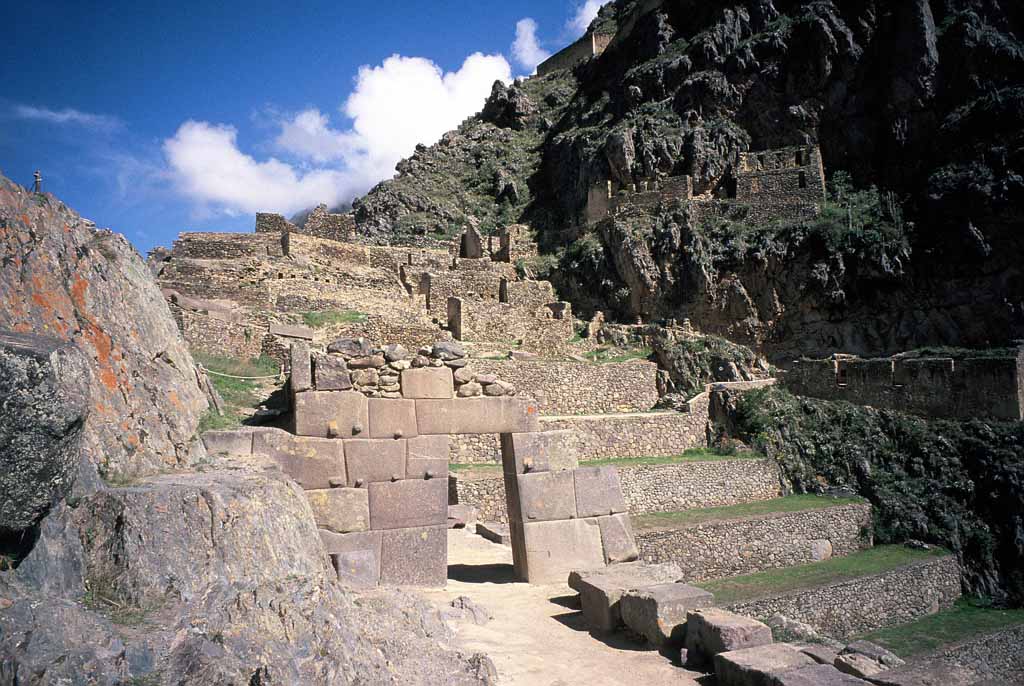
Ollantaytambo is not only a doorway to Machu Picchu but has its own magnificent ruins which we visited early next morning. Normally it is a good investment to spend a couple of dollars for a local guide; they are often very knowledgeable and tell lots of stories. But you have to be careful, don’t believe every word. The guides will tell you a lot of „facts“ but as I wrote earlier one knows little about the Incas and their culture. The guides normally have no other training than doing their job, talking to other guides, reading the one or the other book and picking up different things. I often heard things which are questionable or simply wrong (to be honest, some of the false stories are excellent). Fortunately South American Explorers sold me „Exploring Cusco” by Peter Frost, I heard that some travellers call it “The Bible” for travelling the region (South American Explorers might be the only place where you can buy it). The book cannot substitute a guide but it can help to tell right from wrong and it gives many details the guides don’t know or do not mention.
Another annotation has to be made on the ruins themselves. They are mostly very impressive but hardly anyone tells you that they have not only been freed from plants but were often widely reconstructed. That looks very fine, in Spanish they call it even “poner en valor” – “to make it worth something”, but often it is not reconstruction but modelling the reconstructor’s imagination. In the Inca temple Qoricancha in Cusco you can find a very good example: in a certain place they installed a Colonial-era reworked stone (the base of a column?) upside down (!), making it look like an alter and labelled the place “Sacrifice Room”. Nobody tells you this, you got to read “The Bible”. On the other hand this information might be wrong, too, but I trust it more than most of the guides I heard.
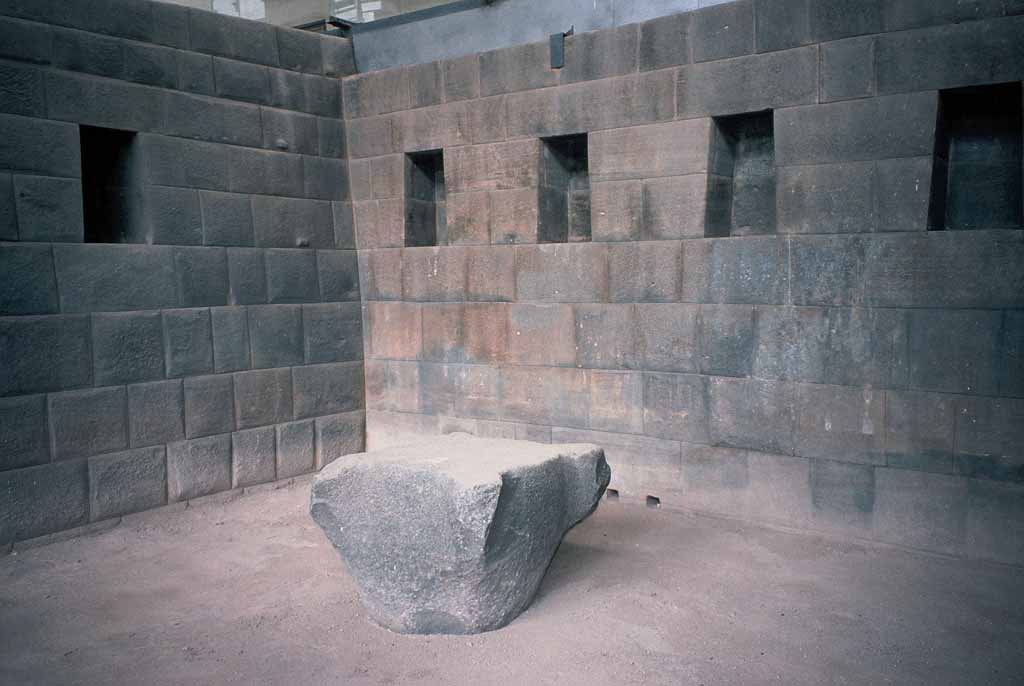
I will not write too much about the ruins themselves. You have to see them yourselves to get a feeling for the places and the history. Later I will put pictures on my homepage.
Some might call me a heretic but the ruins of the Incas did not impress me as much as those of Tikal. Maybe the reason is that most of them are hardly older than 500 years. Then again, the Incas’ masonry is very impressive: stones, some weighing over 100 tons, were fitted so closely into each other that there is no room for even a razor blade. In those constructions they did not use any kind of cement but most of them survived severe earthquakes undamaged. But this kind of construction was reserved to very special buildings; more ordinary houses were built from stones and mud probably with similar techniques they used in Europe around that time.
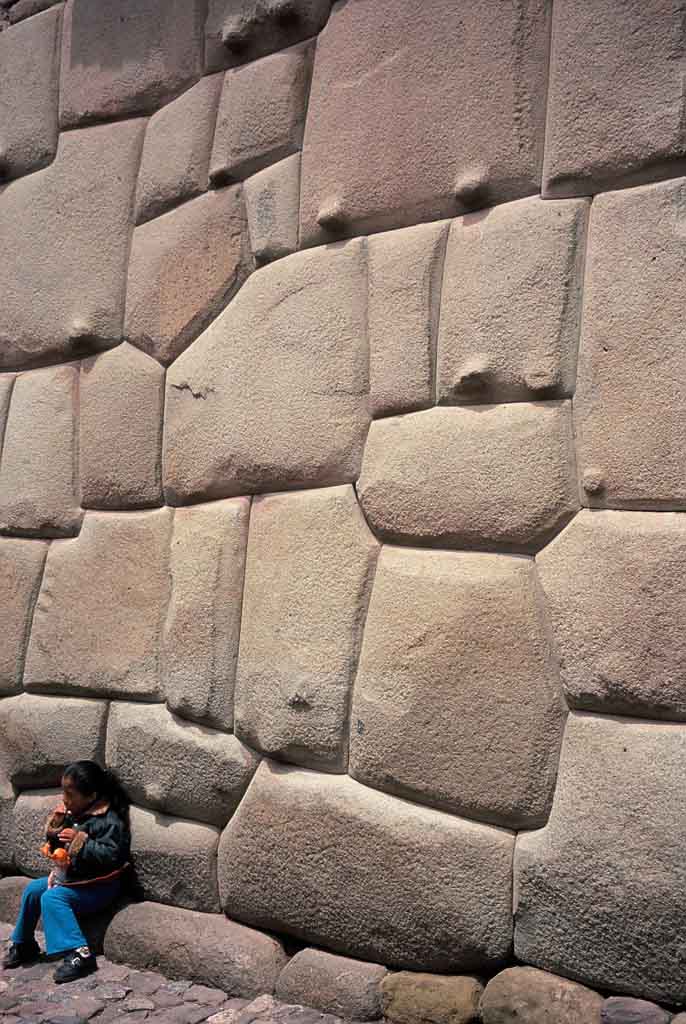
After some two hours we returned to the hotel where horses were waiting for us. They took us on a beautiful trip through remote nature passing more ruins and tiny villages. Unfortunately they did not want to gallop though I had hoped for some more real riding (compare travelogue Tupiza, 2003). Maybe some day I have to try riding in Germany as my quota of good rides (as opposed to beautiful horseback walks) in Latin America is only one out of four now.
